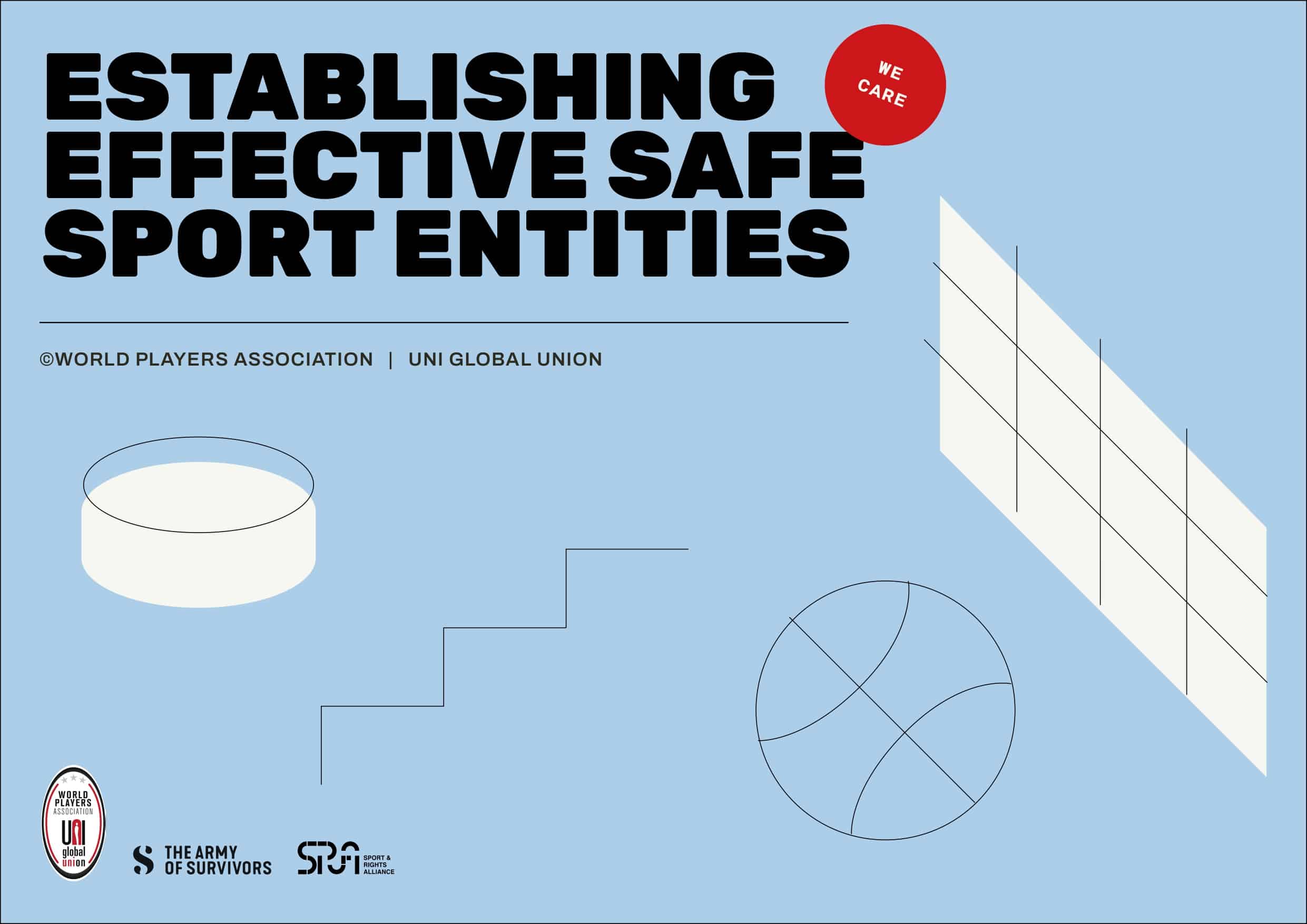As an affiliate of the World Players Association, EU Athletes supports today’s launch of “Establishing Effective Safe Sport Entities”, a concise guide on the key principles and essential functions of entities established to address and remedy the scourge of abuse in sport. Developed together with The Army of Survivors and the Sport & Rights Alliance, the guide provides sports bodies, governments, player associations, civil society organisations, and other stakeholders with a clear benchmark to ensure safe sport entities are able to prevent, investigate and respond to abuse in a manner that protects the safety, humanity, dignity and voice of impacted athletes.
Recent and continuing revelations of endemic, appalling and systemic abuse of athletes, often fostered by enabling cultures of sporting norms, nepotism, cover-up, and retaliation, have triggered a rush to establish safe sport initiatives. While potentially an important step , these processes commonly have significant shortcomings in purpose, culture, capacity, expertise, and transparency – often exacerbating harm for victims and survivors. Athletes turning to such entities report a lack of support and safety, an absence of trauma-informed approaches, ineffective reporting procedures, a legalistic and adversarial system of dispute resolution, and gaps when it comes to meaningful reparation and remedy.
Athlete trust – essential to the success of any safe sport initiative – has too often been destroyed by being forced into a system principally designed to protect the reputation of the sports body itself as opposed to identifying the justice needs of victims and systemic causal factors. Some sports bodies and governments have made the dangerous assumption that the already problematic sports integrity framework – designed around challenges such as anti-doping and match-fixing – is capable of addressing the particular challenge of abuse and the sporting environments which enable it.
Based on these experiences and coupled with the knowledge of experts in the field of trauma and abuse, the guide articulates six key principles that need to be embedded in the establishment and operations of safe sport entities to ensure that initiatives can deliver justice and support for survivors:
- Human Rights-Based
- Survivor-Centred
- Independency & Accountability
- Safety & Accessibility
- Meaningful Stakeholder Engagement
- Effective Remedy
In addition, the guide identifies five essential functions that such entities need to fulfil in order to respond to the needs of survivors and drive the necessary systemic change to achieve the stated safe sport purpose:
- Support
- Reporting
- Investigation
- Remedy
- Prevention
The released guidance comes at a critical point in time, as FIFA is looking at establishing an structure on a global and multisport level, and other national-level initiatives are underway in several countries under the guidance of national governments.
EU Athletes General Secretary Paulina Tomczyk said:
“Every case of athlete abuse is one too many. Sport organisations, governments and other stakeholders need to recognize their responsibility and deal with the systemic abuse in sport head on. Establishing safe sport entities is a step in the right direction, but their structure and functioning need to be fit for purpose. With the Safe Sport Entity Guide, the player association movement is showing its committed to being a part of the solution and making sure that the protection of rights and integrity of athletes is a non negotiable priority.”
World Players Executive Director Brendan Schwab said:
“Abuse in sport is continuing to destroy the lives of thousands of players around the world. We cannot wait for the system to come up with a solution, as the system is part of the problem. There is an urgent need to establish new and carefully designed structures that can deal with these cases and meet the individual, collective and systemic justice needs of victims, survivors and athletes generally. This guide provides clear criteria to ensure that those initiatives can be effective, safe, trauma-informed, survivor-centred, and deliver the systemic change needed.”
The Army of Survivors Executive Director Julie Ann Rivers-Cochran said:
“While we agree that current safeguarding and reporting systems need to be revisited in order to prioritize athlete safety and wellbeing, our hope is that new entities being created are taking the right measures into account. By utilizing this guide, organizations have principles and key functions that will aid them in creating transparent and survivor-centered processes.”
Sport & Rights Alliance Director Andrea Florence said:
“To move forward, it is important that we learn from mistakes in the past. For too long we have seen processes and systems built to protect sport and its reputation. We need to finally start to focus on those most affected by the current failures: the athletes and survivors. For the effectiveness of any safe sport institution, it is absolutely critical to be based on meaningful, nonexploitative, safe and trauma-informed consultation with survivors.”
Establishing Effective Safe Sport Entities – Guide
Original press release by World Players Association

